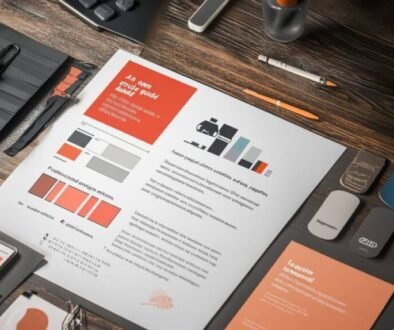Brand Style Guide Examples: 10 Inspiring Designs That Work
Ever wonder why some brands instantly feel trustworthy and polished while others don’t? The secret often lies in a strong visual identity—and that starts with clear, consistent brand style guide examples.
Whether you’re launching a startup, rebranding, or just trying to get your marketing team on the same page, looking at real brand style guide examples can spark ideas and show you what’s possible. A solid brand style guide helps maintain consistency across your logo usage, colors, typography, and even tone of voice. It keeps your messaging aligned no matter who’s creating content—designer, marketer, or freelancer.
In this article, we’ll walk through ten powerful brand style guide examples from top companies and break down what makes them so effective. You’ll get inspiration and actionable insights to help shape or upgrade your own brand identity.
Let’s dive into the best in class—and figure out what your brand guide might be missing.
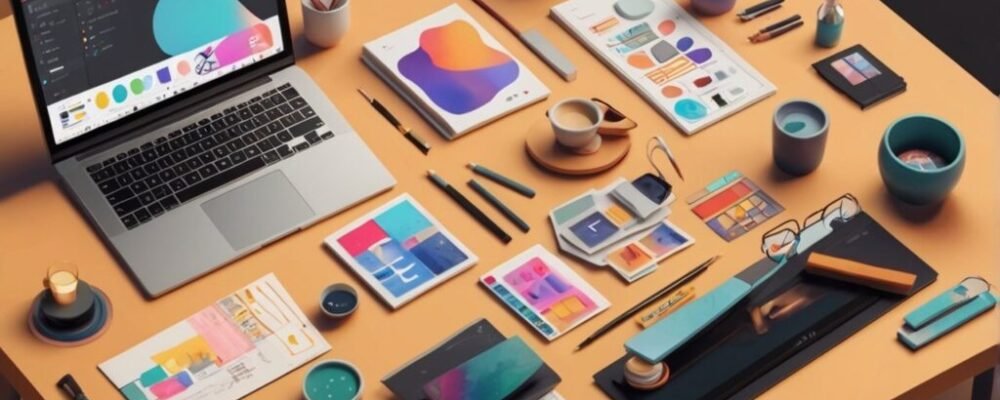
Chapter 1: Why a Brand Style Guide Matters: Real Talk for Creators and Teams
If you’ve ever looked at a brand and thought, “Wow, everything just fits”—that’s no accident. It’s the power of consistency, and it all starts with a well-crafted brand style guide.
Brand style guide examples show us that consistency isn’t just “nice to have”—it’s the foundation of trust, memorability, and professionalism. Whether you’re a solo entrepreneur or scaling a creative team, a brand style guide helps everyone—from designers to virtual assistants—stay aligned.
Think of it like a GPS for your brand. Without it, your visuals, messaging, and tone are all over the place.
What Is a Brand Style Guide, Really?
At its core, a brand style guide is a documented set of standards that define how your brand looks and sounds across all platforms.
According to Harvard Business Review, consistent brand presentation across all platforms increases revenue by up to 23%. And yet, many small businesses and startups still overlook this foundational tool.
A typical style guide includes:
-
Logo usage (what to do and what not to do)
-
Brand color palette with HEX or RGB codes
-
Typography guidelines (font families, hierarchy)
-
Voice and tone (how your brand speaks)
-
Imagery style and iconography
For a full breakdown, check out this resource:
👉 What is a Brand Style Guide? Everything You Need to Know
Why Consistency Wins: A Freelancer’s Story
Take Lena, a freelance web designer who works with multiple brands. Without a style guide, her clients often send mixed messages:
“Use the logo in green!”
“No, make it navy.”
“Wait, what font is our headline again?”
The result? Confusion. Missed deadlines. Sloppy design. But when a client gives her a clear, polished brand style guide, projects run smoother, faster, and cheaper. That’s the magic.
Want your brand to be as easy to work with as Lena’s dream clients?
👉 Check out the best solution on Fiverr →
You’ll find affordable branding experts ready to turn your brand chaos into a clean, consistent identity.
Agency vs. Freelancer: Who Should Make Your Guide?
Let’s be real—creating a polished brand style guide takes time and expertise. But which path is right for you?
💼 Branding Agency
-
Best for: Larger companies with big budgets
-
Pros: Deep strategy, brand audits, full service
-
Cons: Expensive (often $3,000+), long timelines
🧑💻 Freelancer (e.g., on Fiverr)
-
Best for: Startups, creators, small businesses
-
Pros: Affordable service, fast turnaround, flexible
-
Cons: Requires clear communication
💡 Statista reports that freelance platforms are growing at 17% annually, largely because small brands want expert work without agency prices.
Looking for an experienced freelancer?
👉 Discover this affordable service and get started today
Or, if you’re a DIY type but need guidance:
👉 How to Find a Professional Logo Designer on Fiverr
Internal Style Chaos = Lost Revenue
Inconsistent branding doesn’t just look bad—it costs you.
Imagine a visitor hits your landing page, sees three different fonts, a pixelated logo, and a tone of voice that flips between corporate-speak and emojis. Confidence = gone.
Compare that to a brand with:
-
Clean visuals across social media and website
-
Cohesive voice in every blog post
-
On-brand product packaging and business cards
If that’s your goal, a brand style guide isn’t optional—it’s essential.
Here’s your next step:
👉 See pricing and reviews directly on Fiverr
Smart Brands Don’t Guess—They Document
Even if you’re just starting out, creating a mini brand guide now saves hours later. And if you’re scaling? It’s non-negotiable.
Not sure what to include in your style guide?
👉 25 Questions to Ask a Web Designer Before Hiring
This guide will help you clarify your visual identity before handing it off to a pro.
TL;DR – Why a Brand Style Guide Is Worth It
-
Keeps your brand consistent across platforms
-
Speeds up collaboration with freelancers or agencies
-
Boosts credibility and conversion
-
Saves time (and money) long-term
Need help creating your own guide?
👉 Hire Fiverr Experts – 2025 Guide to Costs & Pro Tips
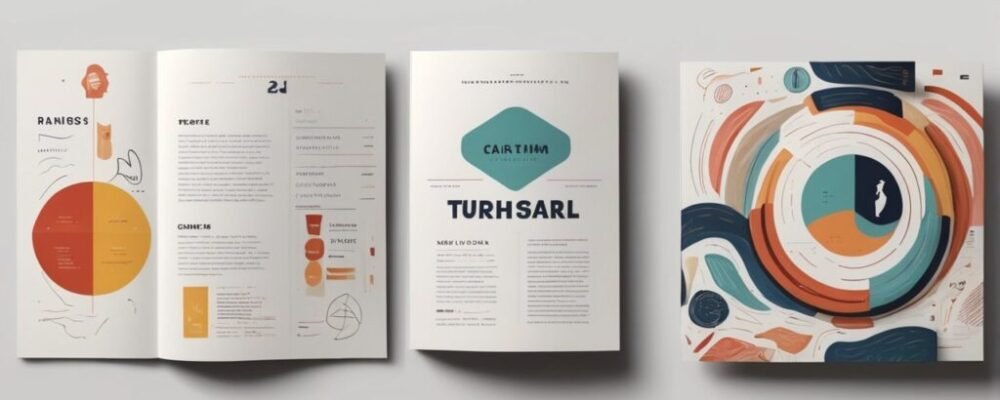
Chapter 2: What Makes a Great Brand Style Guide?
Not all brand style guide examples are created equal. Some are detailed masterpieces that drive brand recognition across every touchpoint. Others? They’re vague, outdated, or just plain confusing.
If you’re serious about standing out—and staying consistent—you need more than a pretty logo file. You need a guide that’s crystal clear, easy to use, and built to scale with your brand.
Let’s break down the essential elements of a great brand style guide and how to build one that actually gets used.
The Must-Have Sections in Any Brand Style Guide
A strong style guide should answer this simple question:
“How do we look, sound, and show up—consistently?”
Here are the key sections top-performing brand style guide examples always include:
🖼 1. Logo Usage Guidelines
Your logo is the face of your brand—and it needs rules. This section should show:
-
Primary and secondary logo versions
-
Minimum clear space and sizing rules
-
Correct color usage
-
What not to do (stretching, rotating, changing colors)
📌 Tip: Add visual examples for clarity. A designer shouldn’t have to guess.
Need a pro to clean up your logo usage rules?
👉 Check out the best solution on Fiverr →
🎨 2. Brand Color Palette
Color consistency helps with instant recognition. Your guide should include:
-
Primary and secondary color swatches
-
HEX, RGB, CMYK values
-
Usage rules (e.g., accent colors only on CTA buttons)
Want a color palette designed to convert?
👉 Discover this affordable service and get started today
🔤 3. Typography Rules
Fonts are more emotional than most brands realize. Your typography section should detail:
-
Headline font(s) and weights
-
Body copy font(s) and spacing
-
Hierarchy usage: H1, H2, body, captions
-
Mobile responsiveness tips
Looking to refresh your typography?
👉 See pricing and reviews directly on Fiverr
✍️ 4. Brand Voice and Tone
A brand isn’t just how it looks—it’s how it talks. Clear voice guidelines help copywriters, marketers, and social media managers stay on-brand. Include:
-
Tone descriptors (e.g., friendly, expert, playful)
-
Examples of on-brand vs off-brand voice
-
Words or phrases to use/avoid
-
Email and social media tone adjustments
Need help with brand tone development?
👉 Hire Fiverr experts – see how others do it
🖼 5. Imagery and Iconography Style
Visual consistency builds trust. Include:
-
Image mood/style (e.g., lifestyle, minimal, bold)
-
Photography do’s and don’ts
-
Icon guidelines (outline vs filled, color rules)
-
Illustration styles and tone
For visual inspiration:
👉 Logo Ideas: 25 Creative Designs to Inspire Your Brand
🧩 Optional but Powerful Add-ons
High-quality brand style guide examples often include bonus sections like:
-
Brand mission and values
-
Sample layouts (website, business card, social post)
-
Link to download brand assets (logos, fonts, templates)
-
Brand personality spectrum (e.g., formal vs casual)
Want to know what to include on business cards too?
👉 What Should Be Included on a Business Card: The Ultimate Guide
Freelancer vs Template vs DIY: What’s Best?
Here’s how each option compares when creating your guide:
| Option | Pros | Cons |
|---|---|---|
| 🎨 Freelancer (e.g., Fiverr) | Fast, expert help, affordable | May require clear brief & references |
| 🧰 Template | Budget-friendly, quick start | Not fully customized |
| ✍️ DIY | Full control | Time-consuming, needs design skills |
If you’re not a designer, hiring a vetted freelancer is your best bet for professional results.
👉 Explore top-rated Fiverr brand guide experts here →
Real-World Example: Before & After a Style Guide
Case: Small E-commerce Brand
Before:
-
Canva graphics used 6 different fonts
-
Social posts had inconsistent tones (“fun” on IG, “formal” on LinkedIn)
-
Freelancers kept asking: “What colors do you want?”
After:
-
One-page style guide created by a Fiverr designer
-
All platforms aligned
-
Time spent briefing freelancers cut in half
-
Engagement rate up 27% (based on UTM tracking)
💬 “We didn’t realize how much we needed a brand style guide until we had one.” — Client feedback
Make It Actionable, Not Just Pretty
A beautiful brand guide is useless if no one knows where to find it—or how to use it. So:
-
Store it in an accessible location (Google Drive, Notion, brand portal)
-
Train your team on how to apply it
-
Revisit and update it every 6–12 months
Next Step: Build Yours or Hire It Out
Now that you know what separates great brand style guide examples from forgettable ones, what’s your move?
If you’re ready to build yours fast—with pro-level polish—start here:
👉 Check out the best solution on Fiverr →
Or, if you want more inspiration first:
👉 What is a Brand Style Guide? Everything You Need to Know
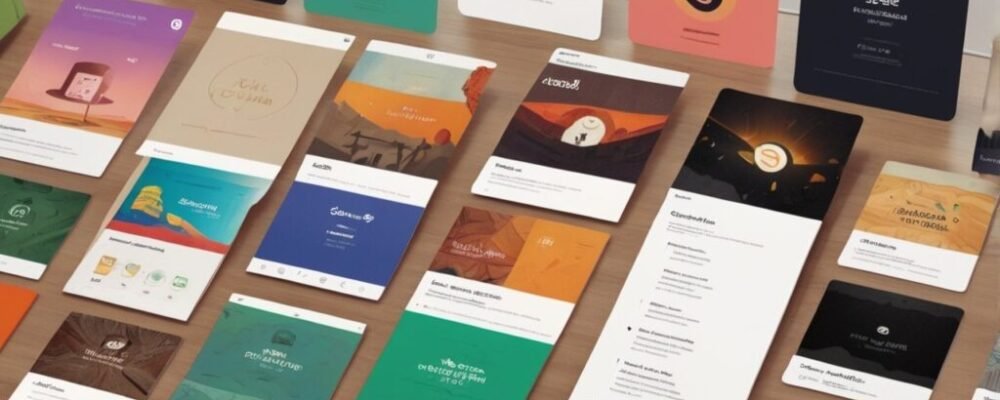
Chapter 3: 10 Inspiring Brand Style Guide Examples You Can Learn From
Some brands just get it—the logo, the colors, the vibe—it all clicks. Behind that polish? A solid, strategic brand style guide.
In this chapter, we’ll explore 10 standout brand style guide examples from companies that have nailed the art of visual and verbal consistency. Whether you’re a solo founder or a design agency, these examples offer practical inspiration for your own brand guide.
And if you’re looking to create one fast, skip the struggle:
👉 Check out the best solution on Fiverr →
What Makes These Brand Style Guide Examples Great?
Before we dive in, here’s what we looked for:
-
Clarity and accessibility for teams and freelancers
-
Visual consistency across platforms
-
Practical layout (not just pretty, but usable)
-
Scalability—does it grow with the brand?
Each of these guides hits the mark, with takeaways you can apply right away.
1. Spotify — Bold and Modular
Key Features:
-
High-contrast color combinations
-
Flexible logo usage based on context
-
Clear spacing and placement rules
-
Consistent voice across music genres
Why it works: Spotify’s guide is designed for flexibility without chaos—perfect for a brand that adapts to user context.
✅ Takeaway: Let your logo breathe. Spacing rules = clean design.
2. Mailchimp — Playful but Professional
Key Features:
-
Quirky illustrations that feel human
-
Muted, warm color palette
-
Conversational voice and tone
-
Strong emphasis on accessibility
Why it works: Mailchimp’s brand style guide proves you can be playful and consistent. Their tone is memorable, without trying too hard.
📌 Want a similar vibe for your brand?
👉 Discover this affordable service and get started today
3. Uber — Precision at Scale
Key Features:
-
Monochromatic design system
-
Strict grid and alignment guides
-
Voice guide: “straightforward, bold, useful”
-
Easy-to-navigate PDF with live examples
Why it works: Uber’s global reach demands clarity at every scale. Their guide is industrial but clean.
✅ Takeaway: Even minimalism needs documentation.
4. NASA — Heritage Meets Modernity
Key Features:
-
Historical logo usage from decades past
-
Detailed guidelines on typography and patches
-
Extensive use-case visuals (vehicles, uniforms, etc.)
Why it works: NASA’s guide balances legacy and future-forward clarity. Great example of style serving substance.
📎 Related: What Should Be Included on a Business Card
5. Netflix — Clean, Direct, On-Brand
Key Features:
-
Focus on typography hierarchy
-
Strong visual examples for digital media
-
Concise, easy-to-use structure for teams
Why it works: Netflix doesn’t overdo it. Their guide reflects their content-first culture—minimal, but sharp.
✅ Takeaway: Simplicity scales better than clutter.
6. Google — Open Source and Open Design
Key Features:
-
Material Design system
-
Defined motion guidelines (e.g., UI animations)
-
Publicly accessible documentation
Why it works: Google’s brand style guide is not just a rulebook—it’s a toolkit. Designers around the world use it daily.
💡 Pro Tip: If you work with developers, include UI motion or component spacing rules.
7. Airbnb — Experience First
Key Features:
-
Emotive color palette
-
Photography and illustration rules
-
Narrative tone of voice: human, inclusive, welcoming
Why it works: Airbnb’s style guide isn’t just visual—it’s emotional. It translates their brand promise into every pixel and paragraph.
📌 Related: 25 Questions to Ask a Web Designer Before Hiring
8. Dropbox — Branded Expression
Key Features:
-
Vibrant and expressive color system
-
Looser creative rules for visual assets
-
Strong editorial voice guidelines
Why it works: Dropbox encourages flexibility within consistency. A powerful approach for creative tech brands.
✅ Takeaway: Rules + freedom = balance.
9. Mozilla — Open Source with Brand Control
Key Features:
-
Public brand resource hub
-
Design assets with download links
-
Community-focused tone and identity
Why it works: Mozilla’s open model still maintains brand cohesion—a great model for startups or nonprofits.
10. Asana — Color-Coded for Clarity
Key Features:
-
Soft color gradients for mood and focus
-
Visual system built around clarity and productivity
-
Brand voice: clear, confident, constructive
Why it works: Asana’s guide mirrors their product: structured, calming, and productivity-oriented.
How to Apply These Examples to Your Brand
Ready to build or improve your guide? Here’s what to steal (ethically):
-
Make it visual: Screenshots, logo do’s and don’ts, color chips
-
Keep it editable: PDF is fine, but Notion or Canva templates work too
-
Add context: “Why” something matters helps your team follow rules
Need help turning your vision into a professional style guide?
👉 Hire Fiverr Experts – Fast, Affordable, Professional →
Or dive deeper into the basics:
👉 What is a Brand Style Guide? Everything You Need to Know
Bonus: Get a Free Brand Style Guide Template
Want a shortcut? I’m working on a downloadable one-page brand style guide template you can customize in Canva or Figma. It’ll include:
-
Editable sections for logos, fonts, colors
-
Real content examples
-
Checklist for consistency
Comment below or sign up for updates when it drops!
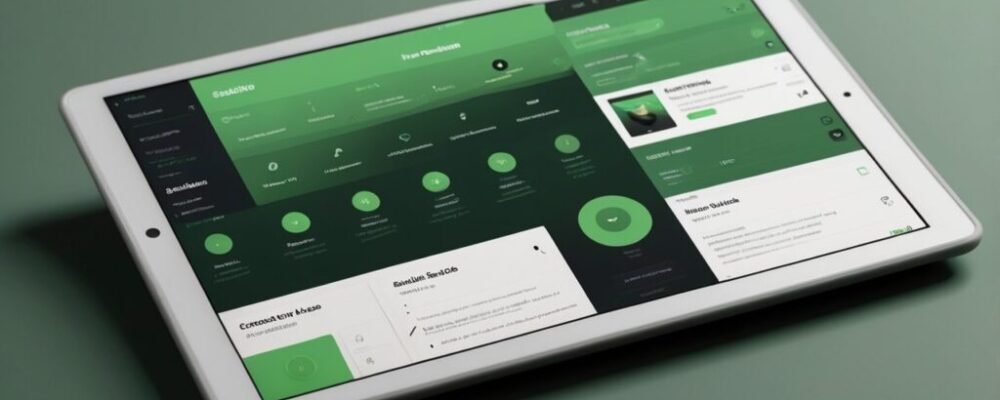
Chapter 4: How to Create Your Own Brand Style Guide (Even If You’re Not a Designer)
You’ve seen the best brand style guide examples—now it’s your turn.
Whether you’re building a brand from scratch or finally organizing your assets, creating a style guide can feel overwhelming. But here’s the truth: you don’t need to be a professional designer or a big brand to build one.
This chapter will walk you step by step through how to create your own brand style guide—what to include, how to structure it, and smart tools to make it 10x easier.
And if you’d rather skip the learning curve?
👉 Check out the best solution on Fiverr →
You’ll find affordable freelancers who can do it professionally and fast.
Why You Need a Style Guide Right Now
Here’s what happens without one:
-
Your logo shows up in 5 colors and 3 sizes
-
Social posts feel off-brand
-
Freelancers constantly ask for the “correct version” of your brand assets
-
Your audience feels confused—even if they can’t explain why
With a style guide, everyone on your team speaks the same visual language. It saves time, boosts brand trust, and makes scaling easier.
👉 What Content Should You Put on a Website? Key Tips + Best Practices
Pair your style guide with smart content planning to stay consistent across platforms.
Step-by-Step: How to Build a Brand Style Guide
Let’s break this down into manageable steps you can follow—even with zero design background.
Step 1 – Define Your Brand Fundamentals
Start with the strategy that drives your look and feel:
-
Brand mission – What’s your purpose?
-
Vision – What future are you building?
-
Values – What matters to you?
-
Target audience – Who are you speaking to?
-
Positioning – What makes you different?
💡 Example: If you’re a vegan skincare brand targeting Gen Z, your tone and visuals should match their expectations: clean, ethical, modern.
Step 2 – Gather Your Visual Assets
Organize these elements before you build your guide:
-
✅ Logos (horizontal, stacked, icon)
-
✅ Color palette (HEX, RGB, CMYK values)
-
✅ Fonts (with download links or licenses)
-
✅ Photography and icons
-
✅ Brand templates (email, social, website)
💡 Bonus tip: Use Google Drive or Notion to store these in a shareable folder.
Need help creating brand visuals?
👉 See pricing and reviews directly on Fiverr →
Or dive into these guides:
👉 How to Find a Professional Logo Designer on Fiverr
👉 Logo Ideas: 25 Creative Designs to Inspire Your Brand
Step 3 – Write Your Brand Voice Guide
This section tells writers and marketers how to talk like your brand.
Include:
-
Your voice (e.g., confident, witty, professional)
-
Do’s and don’ts for tone
-
Sample phrases and language rules
-
CTA voice examples (e.g., “Buy Now” vs “Explore More”)
📌 Helpful if you work with remote teams or outsourced content creators.
Step 4 – Choose Your Format
There’s no “perfect” format. Choose what works best for your workflow:
| Format | Best For | Pros | Cons |
|---|---|---|---|
| Static teams | Easy to share | Harder to update | |
| Notion | Dynamic teams | Editable, live | Requires learning curve |
| Canva | Visual teams | Drag-and-drop | Less structured |
| Google Docs | Beginners | Simple | Lacks visual polish |
Want to make it look polished without spending hours?
👉 Discover this affordable service on Fiverr →
Step 5 – Include Examples and Use Cases
Make your guide practical, not just theoretical.
Add visual examples of:
-
Correct logo use
-
Brand colors on backgrounds
-
Typography in headlines and body text
-
Real screenshots from your social posts or website
📌 The more visual, the better—especially for freelancers and non-designers.
👉 Ultimate SEO Guide 2025 – Beginner to Pro Tips
Make sure your brand guide works in harmony with your SEO and content efforts.
Step 6 – Finalize and Share It
Don’t just create your guide—make it usable:
-
Store it where your team can access it
-
Share a public or client-friendly version
-
Update it every 6–12 months as your brand evolves
-
Train your team or freelancers to use it
Need help finalizing your visual identity?
👉 Hire Fiverr Experts – 2025 Guide to Costs & Pro Tips
DIY vs Hiring a Pro: What’s Right for You?
| Option | You Should DIY If… | You Should Hire If… |
|---|---|---|
| ✅ DIY | You have design skills or love control | You have time to learn tools like Canva or Figma |
| 🎨 Hire | You need it done quickly or at a high level | You’re launching a new business or rebranding |
💡 According to Statista, over 47% of SMBs now outsource design tasks to freelance platforms like Fiverr to speed up branding with lower costs.
👉 Check out the best solution on Fiverr →
Final Tips for Success
-
Don’t aim for perfection—aim for clarity
-
Use templates to get started faster
-
Make it scalable—your brand will grow, so build with the future in mind
Coming soon:
📥 Free Canva Brand Style Guide Template
Want early access? Drop your email below or follow us for updates.

Final Thoughts: Your Brand Style Guide Is the Shortcut to Consistency
From Spotify to Airbnb, the best brand style guide examples all have one thing in common: they remove guesswork and enforce consistency.
And consistency isn’t just about looking good—it builds trust, makes your team more efficient, and helps your business scale without diluting your identity.
Whether you’re running a personal brand, startup, or client-facing business, investing a few hours (or a small budget) into a clear, usable brand style guide pays off fast. It keeps every visual, voice, and touchpoint aligned—from your website to your packaging, emails, and social media.
✅ TL;DR: Your Next Steps
-
Just starting out? Use this article to outline your first brand guide.
-
Want inspiration? Bookmark and review the 10 real-world examples in Chapter 3.
-
Ready to go pro? Hire an expert to design your guide and save weeks of trial and error.
👉 Check out the best solution on Fiverr →
Get matched with vetted designers and branding pros—fast, affordable, and highly rated.
💡 Bonus: Free Brand Style Guide Template (Coming Soon!)
We’re putting the finishing touches on a free Canva/Figma template that includes:
-
Editable logo, color, and typography sections
-
Brand voice tone chart
-
Visual examples
-
Pro checklist for consistency
📥 Want early access? Drop your email below or follow our updates to get the free download when it drops.
Still unsure where to start?
👉 What Is a Brand Style Guide? Everything You Need to Know
Or…
👉 Hire Fiverr Experts – 2025 Guide to Costs & Pro Tips
Your brand deserves clarity. Now’s the time to build it.
Please log in to access your exclusive content.
Don’t have an account? Click the “Register” button below to sign up.

